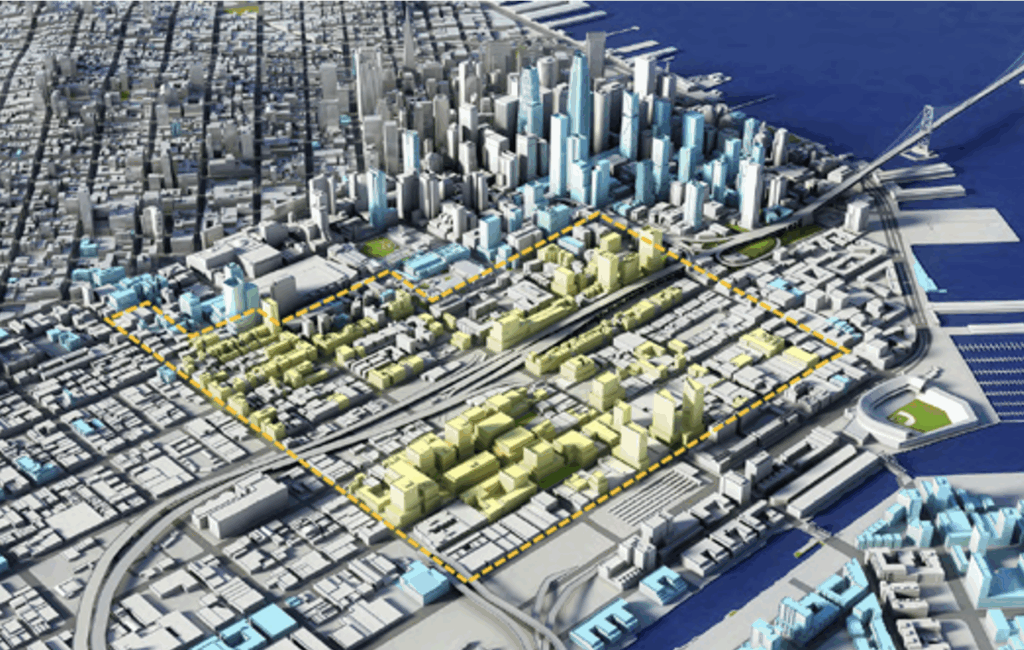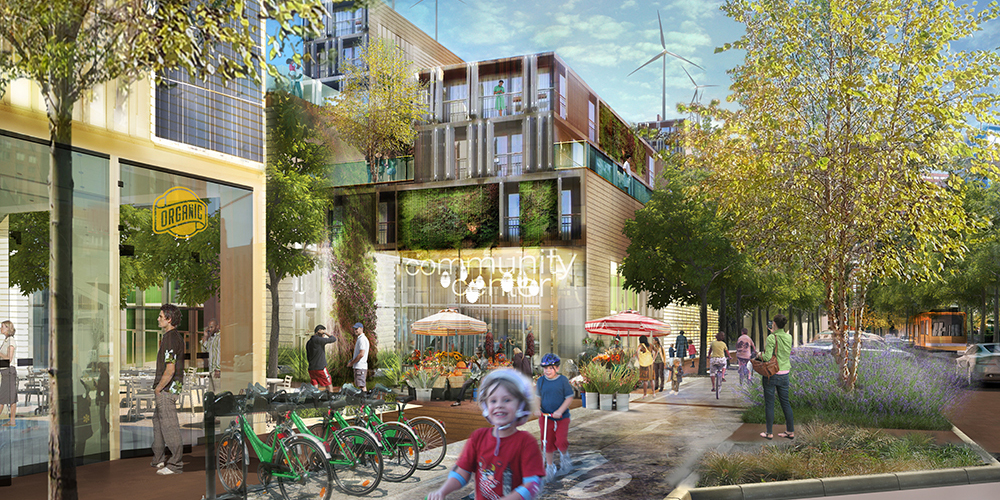REGENERATIVE CITY ASSESSMENT & DISTRICT INFRASTRUCTURE PLAN | SAN FRANCISCO

Boundary of Central Soma District
CLIENT | San Francisco Planning Department
SITE | Central SoMa District (230 acres, adjacent to downtown)
_________________
THE CHALLENGE
San Francisco has long been recognized as a global leader in sustainability and urban innovation. The city sought to take the next step—exploring the potential of regenerative urbanism as a framework for shaping future development. The question: what would it take for San Francisco to evolve toward regenerative systems performance when applied at a district scale?
OUR ROLE
Regensia was contracted to lead the city’s first regenerative city assessment—using our proprietary Regenerative City Assessment (RCA) platform to benchmark Central SoMa’s regenerative potential. The work included:
- Reviewing global innovation precedents to help define the unique value of regenerative urbanism for San Francisco
- Applying the RCA framework to benchmark and assess Central SoMa’s environmental, social, and economic opportunities at the district scale
- Developing four interconnected “Big Move” strategies with ZGF Architects, including an Integrated Utility Hub, to advance Central SoMa toward regenerative performance
KEY FINDINGS

Illustration of a Regenerative Urban District, courtesy ZGF Architects
- Cost-Benefit Insight: Regenerative infrastructure improvements—supporting both new development and the existing built environment—would require approximately 10% more in upfront investment than conventional approaches.
- Return on Investment: That additional investment could yield over $2 billion in public benefits through new revenue streams, cost savings, and avoided expenses.
- Systemic Potential: The analysis highlighted regenerative design as not only a technical strategy, but also a catalyst for new forms of urban governance and coordination.
GOVERNANCE & INNOVATION
The study proposed a “cooperation entity” to integrate government agencies, private sector stakeholders, academic institutions, and civic groups into a unified platform. This model would:
- Coordinate diverse interests
- Set and implement policy initiatives
- Pool funding for both capital and operational costs
- Ensure long-term stewardship of regenerative district systems
RESULTS & IMPACT
This assessment was acknowledged as the most advanced sustainability study the City had commissioned to date, becoming a foundation for San Francisco’s municipal agencies to deepen their understanding of next-generation urban planning approaches.

Performance scorecards for baseline conditions, planned improvements, and Regensia/ZGF’s regenerative proposal.

